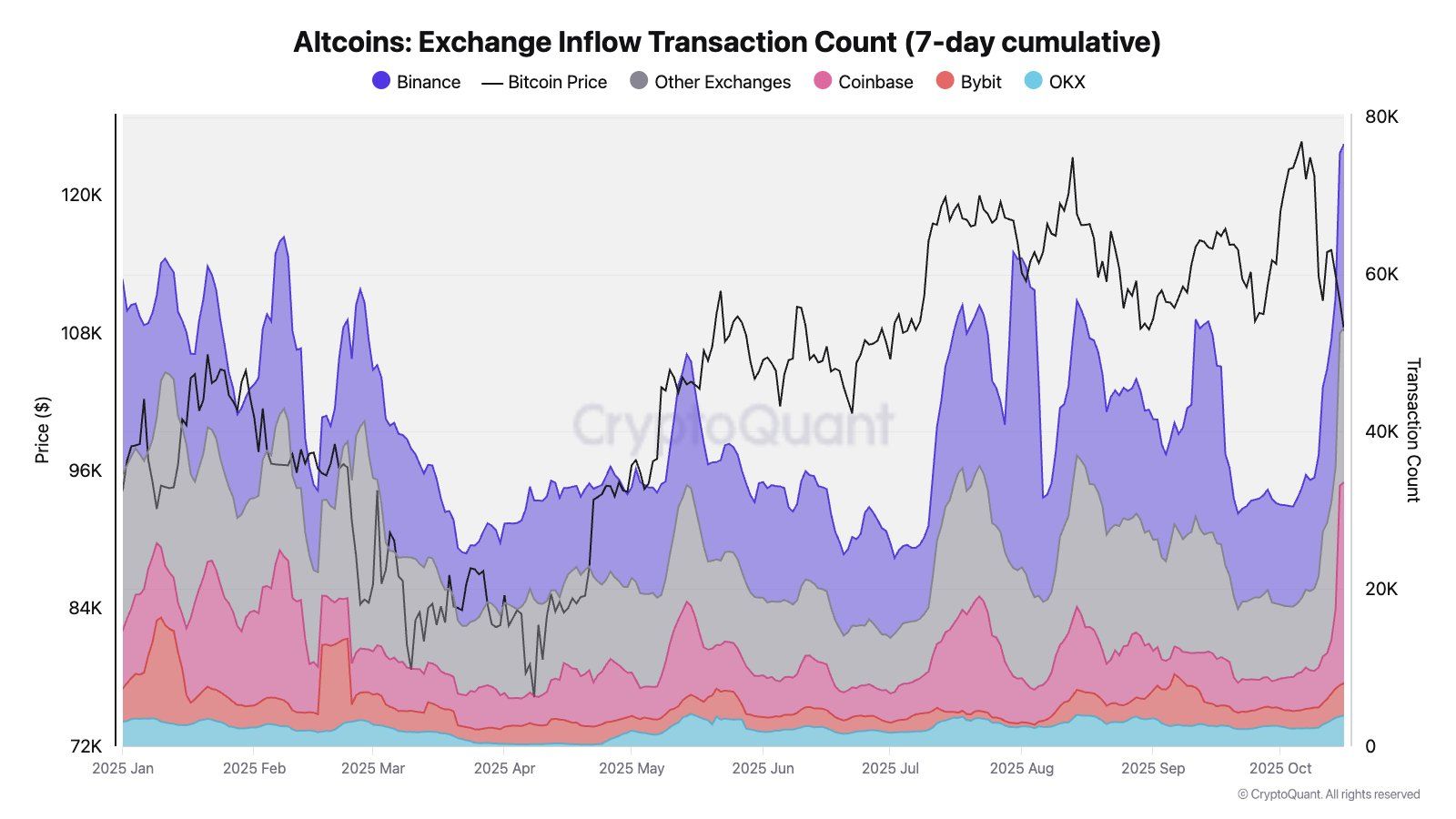Why the Altcoin Market Cap Decline May Deepen in October
- Gold Price Forecast: XAU/USD recovers above $4,100, hawkish Fed might cap gains
- Bitcoin's 2025 Gains Erased: Who Ended the BTC Bull Market?
- Nearly $2 Billion Wiped Out in Crypto Liquidations Amid Brutal Sell-Off
- Gold Price Forecast: XAU/USD declines below $4,050 on USD strength and hawkish Fed comments
- U.S. September Nonfarm Payrolls: Two-Scenario Analysis, Will U.S. Stocks Diverge in Short-Term and Medium-to-Long-Term Trends?
- Gold Price Forecast: XAU/USD edges higher above $4,100 ahead of delayed US September NFP report

The crypto market has been turbulent in October, with altcoin market capitalization dropping another 15%, and the month isn’t even over yet. Could this downturn worsen before October ends?
Recent data and analyses reveal clues investors can use to assess risks and opportunities during this sensitive period.
Over 70,000 Altcoin Inflow Transactions Could Deepen the Decline
The decline is not just a result of short-term volatility. It also reflects rising sell pressure and weakening demand from investors.
One of the clearest signals is the sharp increase in the number of altcoins sent to exchanges, which reached its highest level this year.
Data from CryptoQuant shows that the 7-day average of altcoin inflow transactions has surpassed 70,000. Earlier in 2025, similar spikes in inflow activity coincided with major price drops in Bitcoin and altcoins.

“Transactions sending alts to exchanges just hit a new YTD high, signaling rising sell pressure — or traders gearing up for the next big rotation,” Coin Bureau noted.
A rising volume of altcoins moving to exchanges might indicate redistribution rather than immediate price declines. However, stablecoin data helps complete the picture of market sentiment.
Weakening Stablecoin Inflows Signal Diminished Buying Power
CryptoQuant’s Stablecoin CEX Flow data shows that while netflow remains positive, it has dropped sharply since mid-September and is now approaching zero in October.
Fewer stablecoins moving to exchanges suggest a decline in potential buying power. Combined with the surge in altcoin supply on exchanges, this imbalance could amplify downside pressure.

In late 2024, a similar drop in stablecoin netflow preceded a broad market correction.
The USDT.D index, which tracks Tether’s dominance in total market capitalization, supports this argument. It has risen above 5%, indicating that stablecoins are not being deployed to increase altcoin prices.
According to Altcoin Vector, the recent liquidation events have increased USDT dominance — a pattern that historically coincides with sharp altcoin declines.

“The tight dance between Alts and liquidity has misstepped. The recent deleverage event pushed USDT dominance higher, and historically, every such move has coincided with sharp declines in Alts,” Altcoin Vector commented.
Signs of a Potential Bottom Amid Broader Weakness
These indicators suggest that altcoins may struggle to recover quickly from the massive liquidation event that recently rocked the market.
However, technical analyst Merlijn believes altcoins could be approaching a cycle bottom. His view is based on the MACD cross signal, which has appeared only three times in the past eight years — each marking the start of an altcoin supercycle.
History shows that such moments have often led to strong rallies.
Even so, optimism should be balanced with caution. Positive technical signals can emerge in the darkest phases of the market, but the current bearish indicators cannot be ignored.
Investors may need to weigh both sides carefully as October unfolds — a month often remembered for its volatility and turning points.
Read more
* The content presented above, whether from a third party or not, is considered as general advice only. This article should not be construed as containing investment advice, investment recommendations, an offer of or solicitation for any transactions in financial instruments.

